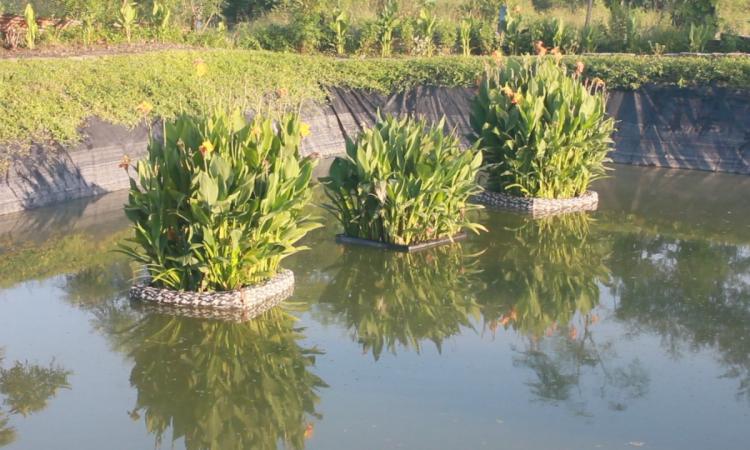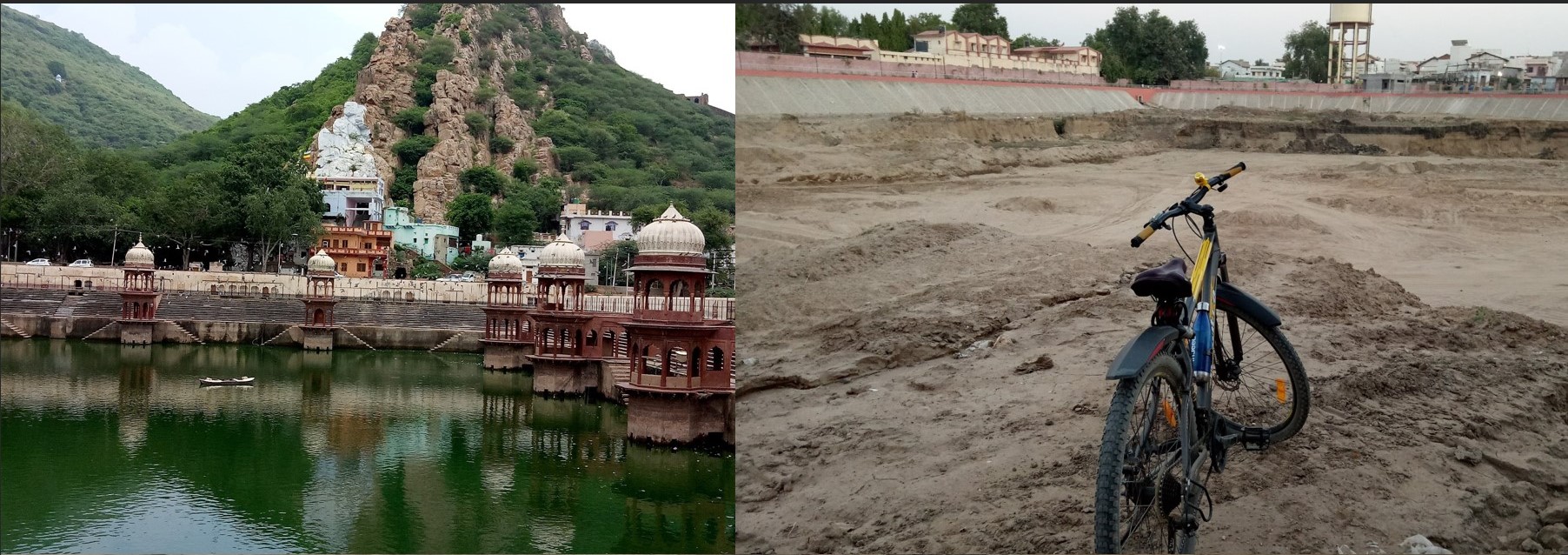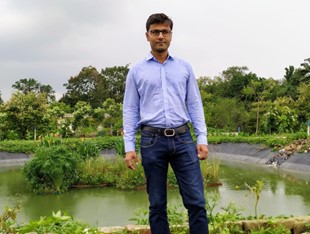
Last April, the Ministry of Jal Shakti, Government of India, conducted a groundbreaking census of water bodies, revealing a staggering 24,24,540 water bodies across India. These encompassed natural and man-made reservoirs, whether lined with masonry or not, intended for a range of uses from irrigation to recreation and groundwater recharge.
As an avid traveler, I've always been captivated by the tranquil beauty of remote lakes and the peaceful ambience of ponds and water tanks nestled amidst bustling Indian cities.
Historically, towns and cities, especially in central and southern India, have relied on these water tanks to store water, providing a multitude of benefits that economists might term "social good." Among these, recreational use stands out as a unique utility of these public spaces in India's context of the lack of public recreational and leisure spaces.
Urban water bodies, encroached and contaminated
However, modern urban water bodies face several challenges. They are encroached upon, polluted by sewage and waste, and suffer from contamination and vector breeding, tarnishing their image across urban, peri-urban, and rural landscapes. When most people of the current generation think back to public ponds or surface tanks in their locality, their noses involuntarily wrinkle, and their faces contort and cringe in memory of pollution, algae, and harmful vegetative growth.


Over the past decade, a renewed interest in rejuvenating these water bodies has emerged. While significant public funds are now channeled into cleaning, restoring, and beautifying them, the approach often falls short of true rejuvenation. The Story of Alwar Kisan Kund rejuvenation is not merely about building cordoned walls and concrete structures for beautification. It entails restoring the ecological balance and health of these water bodies. here is still much ground to cover in adopting a holistic approach to sustainable water body management.
Priyanshu Kamath, a water-preneur with a vision
In our quest to spotlight dedicated entrepreneurs in the water sector who understand this need for a more comprehensive rejuvenation, Priyanshu Kumath's story stands out. An IIT Bombay alumnus, he pivoted from a lucrative corporate career to tackle one of India's most intricate water quality challenges. Intrigued, we reached out to learn more about this budding "water-preneur" based in Indore, often dubbed as India's cleanest city.

Priyanshu's journey began with a degree in civil engineering from IIT Bombay. Initially, he ventured into the housing sector but soon launched his own enterprise, Clean-Water Sustainable Water Technologies Pvt Ltd. His initial focus was on setting up Sewage Treatment Plants (STPs) for developers and industries. However, he soon realised a disheartening truth. "Less than 5% of the installed plants were functional. They were merely set up to secure clearance certificates, with no incentives for maintenance," he shared, highlighting the challenges of operating as a bootstrapped entrepreneur.
Determined to genuinely impact water quality, Priyanshu adopted a fresh approach. "India's urban and peri-urban water bodies are in a dire state and require rejuvenation," he noted. Drawing from his experiences with STPs, he decided to develop a product rather than just offering services. He focused on restoring oxygen supply to aquatic ecosystems by identifying eutrophication as a major issue characterised by excessive nutrient levels leading to vegetation overgrowth and subsequent oxygen depletion.
Leveraging his engineering background, Priyanshu conceptualised innovative solutions like "Floating Islands" and "Floating Aerators." Recognising the need for a bacterial solution to support these structures, he launched a line of beneficial bacterial products designed to combat eutrophication. Clean-Water began fabricating prototypes at their Indore workshop and has since successfully installed them across various parts of India. You can know more about his products here. Priyanshu informs, “We have installed our Floating Islands on 18 water bodies, including lakes and rivers. We have worked in Indore, Ahmedabad, Bengaluru, Delhi, Tamil Nadu”

However, the entrepreneurial journey doesn’t end there. While the solution is tested and proven effective, scaling it to achieve financial sustainability and market penetration remains challenging. Priyanshu shared insights from his extensive experience navigating the water sector's complexities. "Governance challenges are a major concern," he explained. Public water bodies often fall under the purview of multiple government departments, leading to administrative confusion. Bureaucratic red tape and tendering processes hinder the adoption of innovative, technology-based solutions. Another challenge is the limited protection of intellectual property, with look-alike products flooding the market without proper planning or testing, undermining both efficacy and public trust".
Undeterred, Priyanshu enthusiastically approaches these challenges, guiding Clean-Water with clear short-term and long-term goals. In the immediate future, he aims to boost sales, refine product offerings, and integrate Internet of Things (IoT) and artificial intelligence (AI) technologies to create smart floating islands and aerators capable of monitoring water quality in real-time.
Highlighting the potential market for his products, Priyanshu cites the water bodies census, pointing out that privately owned rural water bodies—which account for approximately 40-50 percent of the total—are ripe for his solutions. As India grapples with land scarcity and a growing population, these water bodies could serve dual purposes - water storage and food production. Priyanshu envisions scalable, product-based solutions where rural ponds function as multi-use structures, supporting vegetable cultivation on floating islands and aquaculture below the surface.
Innovators like Priyanshu and enterprises like Clean-Water fill us with hope. They suggest that future generations may not remember their water bodies with disdain, but instead cherish fond memories of the lakes and ponds in their localities.
*** Through our "Water-preneurs of India" series, we aim to spotlight the journeys of entrepreneurs addressing various water-related challenges. These innovators are developing scalable solutions tailored to India's unique needs, paving the way for a brighter, more sustainable future.
/articles/floating-forward-entrepreneurs-tryst-clean-water-bodies